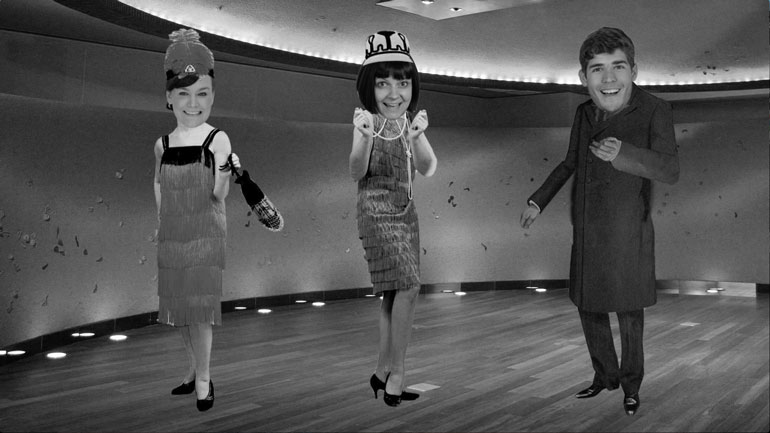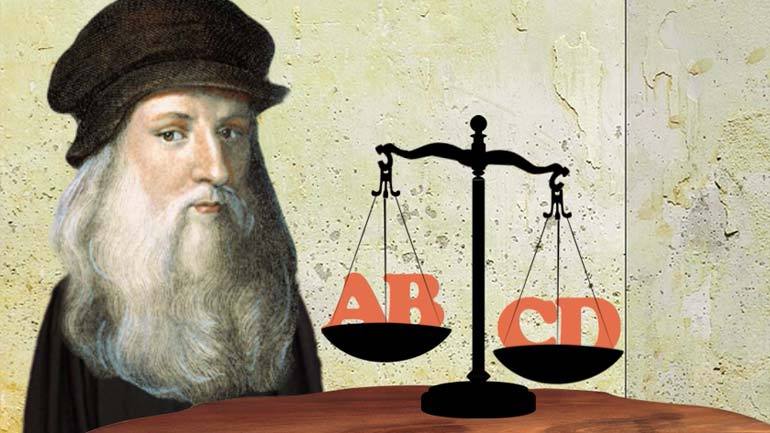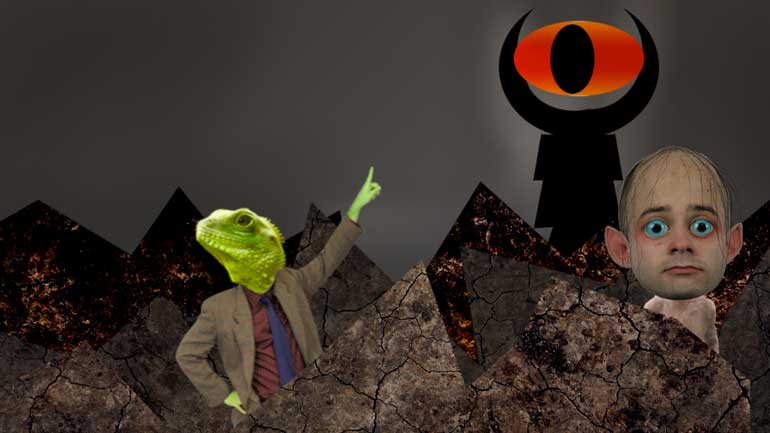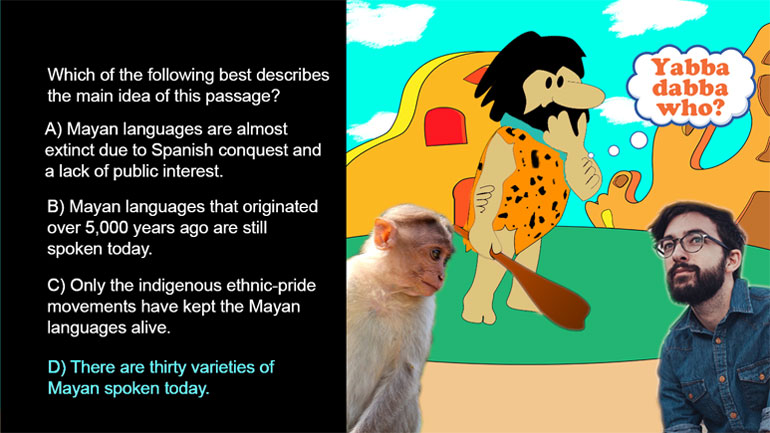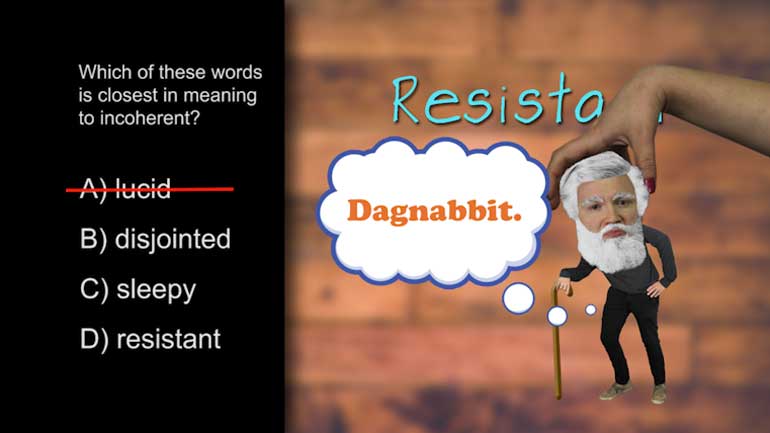ShmoopTube
Where Monty Python meets your 10th grade teacher.
Search Thousands of Shmoop Videos
ASVAB Physical Science 4.2 7 Views
Share It!
Description:
ASVAB Physical Science 4.2. Which law is this situation an example of?
Transcript
- 00:04
And here's your shmoop du jour brought to you by Isaac Newton he [Isaac Newton appears in grocery store]
- 00:07
was a super important scientist who discovered that if you put figs inside of
- 00:10
cookies you get a delicious snack actually that might have been a
- 00:15
different guy all right here's our question bowling pins sit at the end of
- 00:20
the lane will stay still and standing still until a bowling ball strike them [Bowling pins fall down after ball strikes]
Full Transcript
- 00:23
this is an example of what and here are the potential answers....
- 00:28
....all right you probably heard of Isaac
- 00:32
Newton this guy old British scientist an apple fell on his head discovered
- 00:36
gravity sure we're simplifying it a lot but he was one of the most influential
- 00:40
scientists ever come on Al, we love you too well in 1687 Newton came up with
- 00:46
the three laws of motion never knowing that one day they'd be the
- 00:49
star of a shmoop video oh we're sure he'd be thrilled let's start out by
- 00:53
crossing off B the second law from our list his second law basically states
- 00:58
that force equals mass times acceleration F equals MA so if you have
- 01:03
a moving object and it picks up speed it's forces increase and it also means that [Shopping cart moves along]
- 01:09
if you have a moving object and you increase its mass more force is required
- 01:13
to move it which just makes sense but sometimes you need a scientist to prove
- 01:16
these kind of things.. so while our bowling ball was demonstrating the second law our [Bowlin pins move around]
- 01:21
stationary bowling pins were not we can get rid of B what about C third
- 01:25
laws well it states that every action has an equal and opposite reaction for
- 01:30
an ordinary everyday example of this we can think of a jetpack when we strap our [Man wearing a jetpack]
- 01:35
jetpack on and hit the ignition switch the jet engine pushes hot gas downwards [Man rises into air with jetpack]
- 01:40
because there's a powerful downward force there's an equally powerful upward force
- 01:44
and that's how we get to the grocery store yes pretty nifty but still
- 01:49
doesn't clarify why our hands are standing still so we'll keep looking.. maybe
- 01:52
it's option D the law of directionality well the thing is there is no such law [Boy appears beside lots of arrows]
- 01:56
it just sounded really cool right well the correct answer here is A his first
- 02:01
law basically states that an object at rest tends to stay at rest and an object
- 02:05
in motion tends to stay in motion unless an outside force acts on it in an
- 02:11
example well look at some of Saturday morning we're not moving from our [Man dragged from bed]
- 02:15
bed until mom exerts a force on us another example of this is our bowling
- 02:19
pins it's going to stand there forever until a ball comes and runs into them making [Bowling pins struck down by ball]
- 02:23
em move..these laws are pretty intuitive but sometimes it takes a genius to prove
- 02:27
this kind of stuff so we're grateful to good old Isaac Newton for doing all the hard
- 02:30
work and we're also grateful to good old Fig Newton for making yummy cookies wait
- 02:35
his name was Fig, right?
Up Next
ASVAB Paragraph Comprehension 1.2 Summary. Which of the following best describes the purpose of this passage?
Related Videos
ASVAB Paragraph Comprehension 1.2 Vocabulary-In-Context. In this passage, the word "illustrious" most nearly means...what?
ASVAB Paragraph Comprehension 1.3 Vocabulary-In-Context. The word "preposterous" most nearly means what?
ASVAB Paragraph Comprehension 2.3 Summary. Which of the following best describes the main idea of this passage?
ASVAB Word Knowledge: Word Roots, Prefixes, and Suffixes Drill 1, Problem 1. Which of these words is closest in meaning to incoherent?
